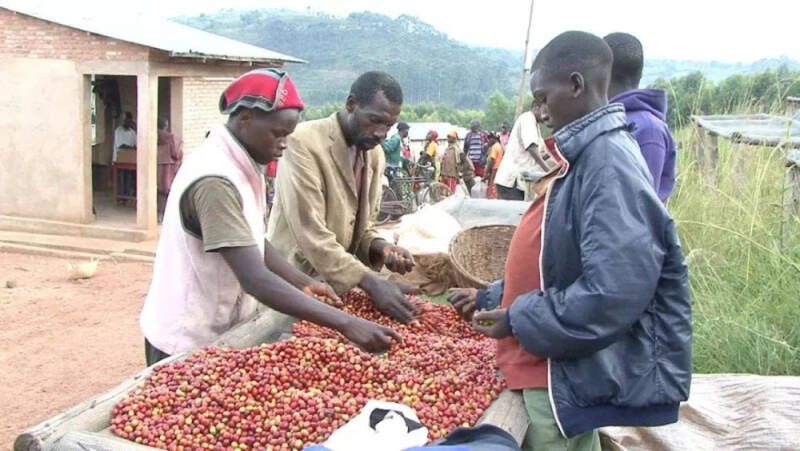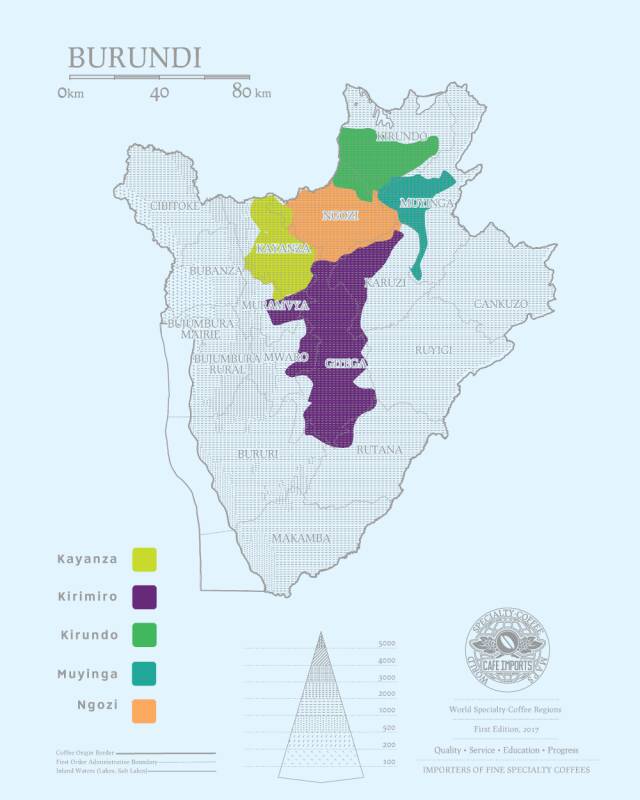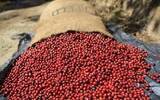Introduction of Burundian coffee development, coffee producing areas, coffee varieties and double washing treatment
Burundi is located south of the equator in east-central Africa. It is bordered by Rwanda to the north, Tanzania to the east and south, and the Democratic Republic of the Congo to the west. It has more plateaus and mountains, mostly composed of the plateau on the east side of the East African Rift Valley, with an average elevation of 1600 meters above sea level, which is known as the "mountain country".
The Burundians themselves have no habit of drinking coffee and do not grow it. Coffee trees were introduced to Burundi by Belgian colonists in 1930. After 1962, Belgian rule ended, and 10 years later, the government took back the coffee industry and nationalized it. People began to realize the economic potential of coffee and began to plant coffee trees. Coffee quickly became an important part of the country's economy. But there was a civil war in the 1990s and 2000s, which led to a sharp decline in coffee production. Coffee production began to recover slowly after the end of the civil war, and it was not until the beginning of the 21st century that the government began to privatize part of the coffee supply chain. With the growth of investment, the number of coffee exports is also increasing.

What really led to the development of Burundian coffee was in 2007, when the Burundian government allowed private coffee washing plants to be set up. On the advice of international customers, they quickly realized that high quality could lead to high prices, so they were willing to learn and improve. In 2011, the excellent Cup COE held a coffee competition in Burundi, which attracted international attention, and then, under the funding program of the World Bank, 175washing treatment plants were set up throughout Burundi. As a result, the current mode of cultivation in Burundi is similar to that in Ethiopia, dominated by small farmers, and the treatment plants are collected and sold.
Coffee producing areas mainly include Cayanza Kayanza, Kirimiro Kirimiro, Guilundo Kirundo, Muyinga Muyinga and Ngozi Ngozi. The elevation is between 1350 and 1700 meters, and the harvest period is from April to July.

Coffee varieties grown in Burundi include bourbon Bourbon, Kaddura Caturra, Kaduai Catuai, Jackson Jackson, SL series and Mibilizi Mibirzi, as well as about 4 per cent of Robsta.
The treatment currently has approximately 283 treatment stations and eight shelling plants throughout Burundi, mainly in the northern and central provinces of the country. Water washing (80%) was the main treatment, followed by sun exposure (15%) and honey treatment (5%). The water washing treatment in Burundi is also unique, as in Kenya, and is often referred to as "double washing treatment / double fermentation treatment", which refers to the need for two washing treatments and two fermentation of coffee beans. The washing trough with this treatment method has two layers, high and low, which are used for the first and second washing respectively.
First of all, the harvested coffee berries, remove the defective fruit, remove the peel, and pour it into the high-level fermentation tank for fermentation or dry body fermentation. After fermenting for a period of time, wash the coffee beans with water and remove them to show that most of the pectin is present. The coffee beans are put into the lower fermentation tank for secondary fermentation. It is also necessary to recycle the water every few hours during fermentation to prevent coffee beans from smelling and mildew. After secondary fermentation, wash the coffee beans with water to remove the remaining pectin. After that, the washed shell beans will be soaked in the sink for more than 12 hours, and finally dried.
Important Notice :
前街咖啡 FrontStreet Coffee has moved to new addredd:
FrontStreet Coffee Address: 315,Donghua East Road,GuangZhou
Tel:020 38364473
- Prev

Coffee-related enterprises will grow by nearly 70% in 2023!
▲ Click to follow | Daily boutique Coffee Culture Magazine Coffee Workshop Coffee is not only a representative of elegant drinks to enjoy life, but also a refreshing rations for fast-paced office workers and Z-generation young people to drink refreshing and pursue fashion. If you lose a cup of life-saving coffee at work, you may be "tired all over". "
- Next

Conab expects Brazil's coffee production to increase in 2024, which will be good news for the coffee market.
Conab, the national commodity supply company under the Brazilian Ministry of Agriculture, recently released a report showing that the Brazilian coffee harvest in 2024 is considered a big year of production, with an estimated 58.08 million bags of coffee, 5.5% higher than in 2023. Conab conducted the first of this year's
Related
- Being chased out of the rain in front of Starbucks?! Store: Sheltering from rain under umbrellas poses a safety hazard
- The white moonlight has changed?! Lucky launches "Big Winter Pear American"
- Hand-brewed coffee three-stage method, high-sweet and universal brewing method to share! What does the high sweet water level of hand-brewed coffee mean?
- What is the difference between raw, refined and full espresso coffee? How to extract espresso and taste good?
- A complete list of coffee bean names and their meanings! What is Yejia Shefi coffee? Where is Mantelin coffee?
- What grade does Arida Manor Kaduai coffee beans belong to? What treatment is Arida ASD slow anaerobic sun exposure?
- The milk tea cup becomes smaller?! Overlord Tea Girl launches a new "Return to Yunnan" series
- Accused of selling counterfeit and high-priced coffee beans! Well-known boutique coffee brand "Oukelao" bowed and apologized!
- How to make espresso dumplings? Can I eat coffee and glutinous rice balls together?
- Save the unformed and stagnant powder cakes in one second! What is the problem with stagnant water in the powder bowl of the espresso machine?

